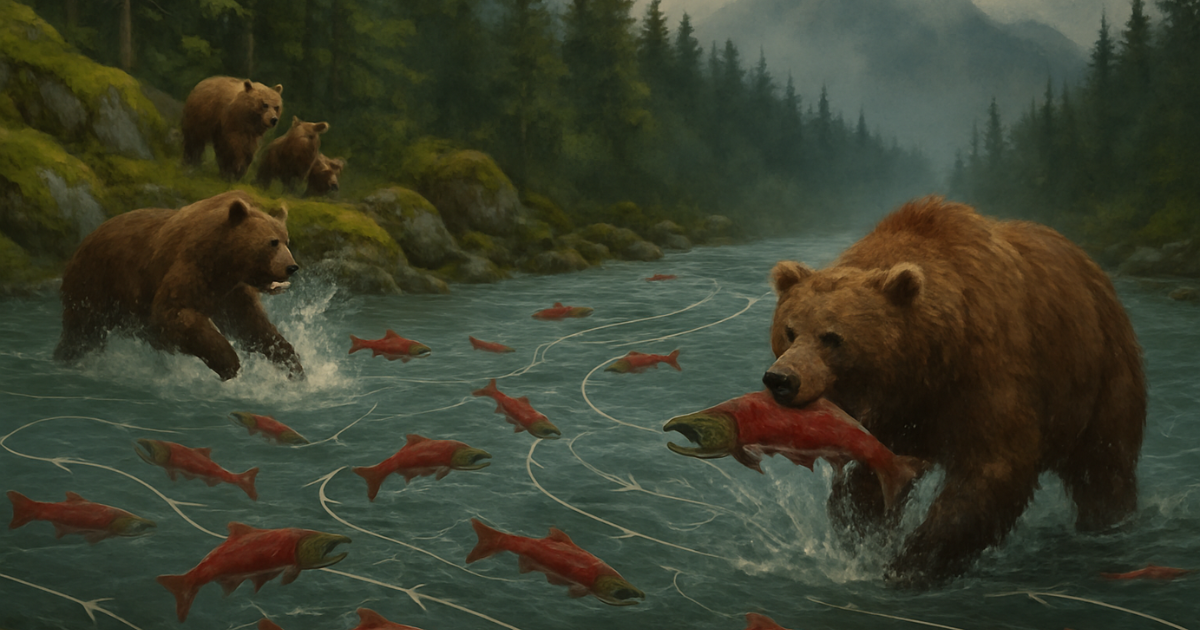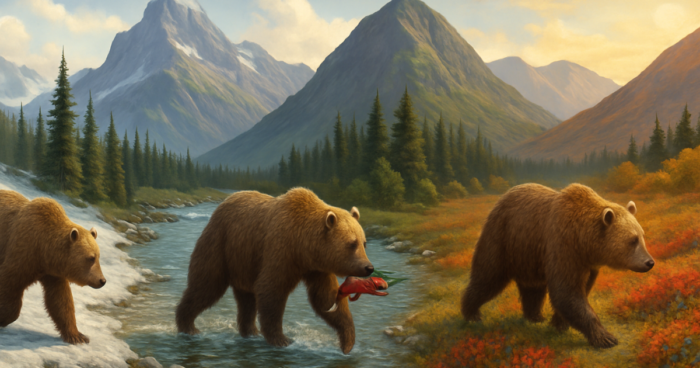The seasonal movements of Alaskan bears are shaped by food availability, climate, and terrain, making their migration across landscapes both predictable and critical for survival. As Alaska’s ecosystems shift with the seasons, both brown and black bears exhibit impressive adaptability, traveling across vast areas to locate food, find mates, and prepare for hibernation. These migrations are more than just wandering; they reflect an ancient rhythm of survival embedded in bear biology. Understanding these movements is essential to protecting habitat corridors and ensuring the future of Alaska’s apex predators.
Bear Migration Patterns in Alaska
Bear migration patterns in Alaska follow the rhythm of seasons and ecological zones, with bears emerging from dens in spring and moving through different habitats until late fall. Brown bears may traverse alpine meadows, coastal sedge flats, and river valleys, while black bears stay primarily within forested zones. Their movements align with food availability, such as the sprouting of vegetation or the timing of salmon runs.
Different species participate in these patterns. Brown bears and grizzlies often roam over larger areas compared to black bears, especially in regions with fragmented food sources. Migration corridors link feeding grounds, mating zones, and denning sites, highlighting the importance of landscape-level conservation.
Species Differences: Grizzlies vs. Black Bears
Seasonal habitat shifts in grizzly bears are typically driven by protein-rich diets and elevation gain in warmer months. These powerful omnivores often migrate from lowland salmon rivers to higher alpine zones to forage on vegetation or small mammals.
In contrast, the territorial range of black bears is more limited, often influenced by forest cover and berry availability. Black bears tend to favor lower elevations and move shorter distances between food sources.
Grizzlies and black bears may overlap in some regions, but their movement strategies differ greatly due to evolutionary and ecological pressures.
👉 To explore more behavioral and biological differences between these species, check out our guide on brown bear vs grizzly bear.
Elevation and Landscape Migration Patterns
Elevation migration in brown bears occurs as they follow melting snowlines and seek alpine vegetation. These vertical migrations allow them to optimize seasonal resources and escape summer heat or insect pressure.
Long-distance movement in Ursidae is particularly notable among male grizzlies during summer foraging, where individuals may roam dozens of miles in search of mating opportunities or concentrated food sources. These patterns underscore how topography-driven migration shapes daily and seasonal routines.
Following the Food: Feeding Grounds & Salmon Runs

Key Alaskan bear feeding grounds include riverbanks, estuaries, and sedge meadows. These habitats offer dense sources of calories, which are essential for bears to build fat reserves for winter.
The salmon run heavily influences bear movement, drawing both brown and grizzly bears to nutrient-rich rivers. Riparian zones become hotspots for bear activity in late summer, supporting not only individual survival but also ecosystem nutrient cycling through bear-distributed fish remains.
Seasonal Movement Corridors and Spring Emergence
After emergence in spring, bears use known movement corridors to access lowland food sources. These corridors often connect denning areas with feeding grounds and are vital for reducing human-wildlife conflict and habitat fragmentation.
Bear home range size variability depends on age, sex, species, and proximity to food. For example, adult males typically occupy larger ranges than females with cubs, who stay closer to dense cover and feeding sites.
How Scientists Track Alaskan Bear Movements
Wildlife biologists track bear movements with GPS collars, revealing fascinating patterns in seasonal travel. These high-tech tools allow researchers to monitor daily movement, den entry/exit, and feeding ground fidelity.
Tracking data is essential for conservation planning. It helps identify migration corridors, population pressures, and behavioral adaptations in real-time, enhancing the effectiveness of habitat protection.
Conclusion
The seasonal movements and how Alaskan bears migrate across landscapes reveal their deep connection to wild environments and ecological cycles. Grizzlies and black bears shift ranges with remarkable precision, responding to climate, food, and terrain.
Understanding seasonal movements and how Alaskan bears migrate across landscapes is vital for conservation planning and habitat protection. Learn more about how species differ in range, diet, and behavior in our comprehensive guide: brown bear vs grizzly bear.


